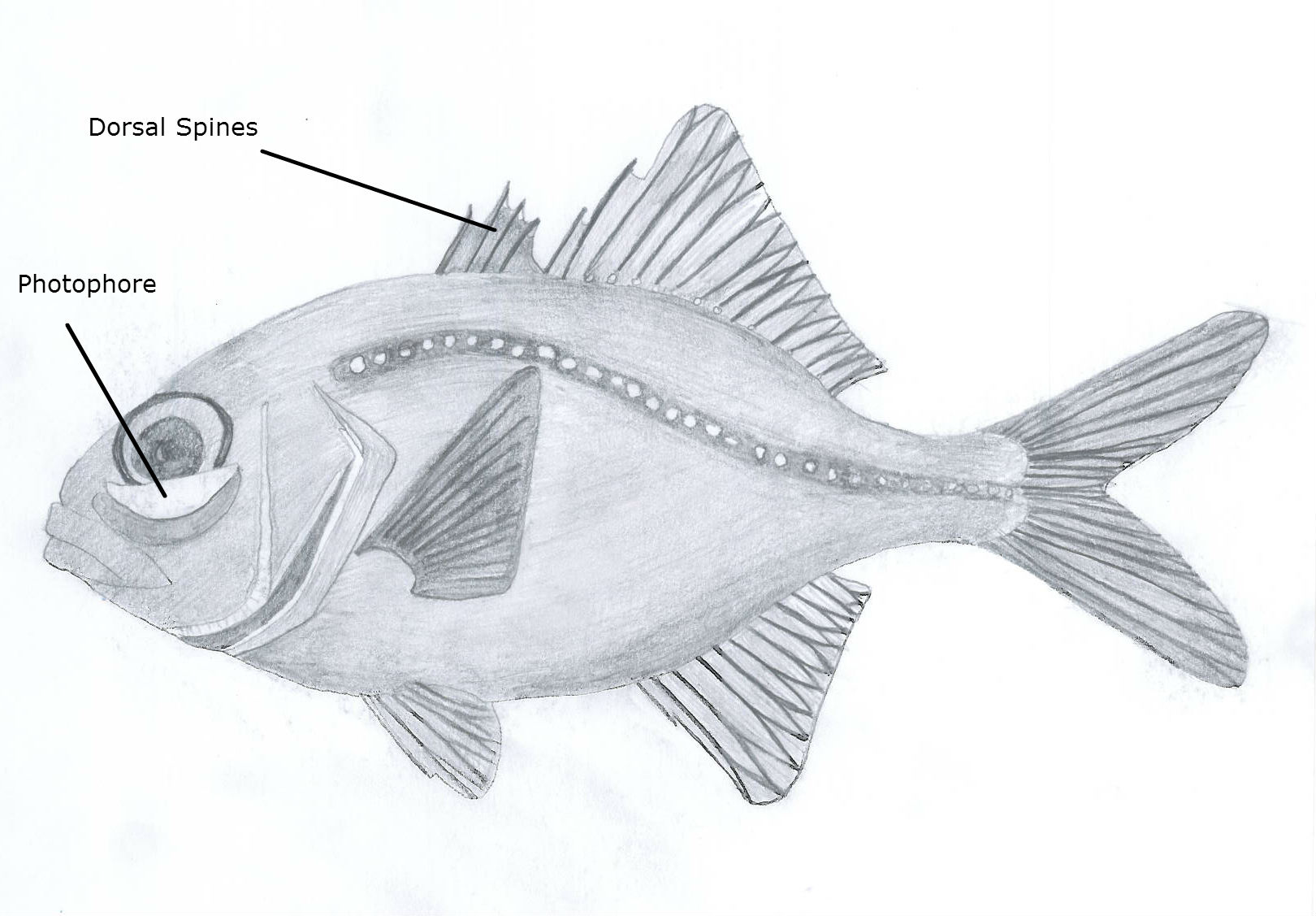Adaptation
Kryptophanaron alfredi is a species of fish that lives in the
waters surrounding Puerto Rico, the Cayman Islands, and
Florida (Colin et al. 1979). You can read more
about the habitat on the habitat
page. As mentioned in
interactions, the photophore is an important
part of the food acquiring process because it provides
light for seeing prey in dark places. The
photophore is a light organ that appears in many marine
animals. The luminosity in fish photophores is shown to
occur because of an electric stimulation to the fish’s
brain that make Porichthys illuminate in the fish
(Herrish, 1982).
In the Kryptophanaron alfredi, the light organ is
located on the head of the fish, on the snout, slightly
pertruding out and encapsulated by a cup shaped cartilaginous
structure (Baldwin et al. 1995). The light organ,
called a photophore, is located directly under the eye,
which is very large and is about one third the size of
the fish's head (Colin et al., 1979). The photophore
is able to control the light it emits in two different
ways. The first way is the photophore contains a
structure, like a black sheet, that attaches to the
bottom rim of the organ (Herrish, 1982). It can
move to cover the light organ and shield it from
emitting light (Herrish, 1982). The other way the
photophore is able to shield light emission is by
rotating the whole organ so that light is not shown
outward and cannot be seen from the surface of the
photophore (Herrish, 1982). The Kryptophanaron alfredi emits
its light in a way
that it appears to be flashing (Herrish, 1982).
The fish quickly alternating
between emitting light and not emitting light by using
the two mechanisms mentioned (Herrish, 1982).
The Kryptophanaron alfredi lives deep in the ocean
and has features that have made it more successful at
living in these areas. The Kryptophanaron alfredi
is very dark in color and has scales that cover its body
but not its head (Baldwin et al. 1995). There are
visible spines on the head in addition to their fins
(Baldwin et al. 1995). The spines are likely to
help the fish protect itself from predators.

Figure 1. Sketch of K. alfredi
depicting location of dorsal spines and photophore.
(Modified from Silvester and Fowler. 1926) Kara
Greenwood. 2013.
Want to keep reading? Visit our
reproduction page.
Return to home.